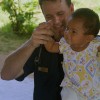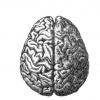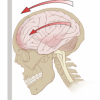Site Topics

Feed a cold and starve a cancer?
May 12th
A recent review in Oncogene discusses how fasting may help patients who have been diagnosed with cancer. This is interesting, because at the moment most people are advised to eat extra calories and proteins while undergoing cancer treatments. It turns out that in animals fasting changes the physiology of the body and this can help protect normal cells from the damaging effects of anti-cancer agents. The amazing thing is that cancer cells are abnormal and don’t get the same protection, so fasting seems to be a way to help normal cells and not help the targets of the treatment. It More >

It’s Like, Okay for Toddlers to Hear Your, um, Speech Stumbles
Apr 18th
Have you ever been accused of using too many disfluencies when you talk? Do you use the words um, uh, or like, a lot? Speech disfluencies are common in our every day speech and can have a variety of uses. They help us slow down what we’re trying to say. They help us repair mistakes. They also help stall time while trying to think of a new word. These words, even though commonly expressed in every day talk, it discouraged in the media. In formal settings, I’m constantly aware of my speech and try to consciously avoid using many disfluencies More >

Learning from Moths
Mar 15th
A student of mine seemed disappointed yesterday when I handed her a paper to read about Butterflies. I wanted to give an example of a nicely written scientific paper that was low on technicality and covered many of the same topics and techniques we had already engaged in class.
The response I got was less than enthusiastic. ‘But what’s the point of studying butterflies? Who would fund that?’ These questions are in reasonable complaints on the mind of many, non-scientists and scientists alike. A recent interview with the astronomer Neil deGrasse Tyson touches on the question of whether the exclusive purpose of More >

A Step Towards Understanding Alzheimer’s
Mar 10th
Alzheimer’s disease is a debilitating disease where neurons in the brain die. These neurons are called basal forebrain cholinergic neurons and their job is to help the hippocampus retrieve memories in the brain. Alzheimer’s disease patients do not have the ability to retrieve memories. It’s not that those memories are lost, they just cannot be retrieved. In early Alzheimer’s, these special neurons die. Since there are so few to be found within the brain, their death can quickly become devastating.
Northwestern Medicine researchers have made a major discovery that can aid in understanding and treating Alzheimer’s. These researchers have taken human More >

The Firing of Developing Neurons
Feb 18th
At the University of Connecticut Health Center, researchers are now studying the development of neurons and their young firing patterns. It has been discovered that the neurons of fetuses as young as 20 to 21 weeks old fire in patterns that can be seen into adulthood. This is a glimpse into young nerve cells and can serve a basis to understanding what happens when brain development goes wrong.
The neurons fire pulses with periods of rest in between. This is commonly seen in sleeping adults. These pulses were seen between neurons located in the cerebral cortex. The cerebral cortex is involved More >

Cancer Genomics: so many mutations!
Feb 18th
The human genome is the complete collection of over three billion bases in each of our cells. Cancers accumulate multiple changes, or mutations, in their DNA that contribute to the disease by changing how cells behave. For instance, cancers need nutrients to grow. Very often, they get these nutrients by producing signals that encourage new blood vessel formation. Finding the mutations that lead to cancer is very difficult. For one thing, even for cancers that affect the same tissue and look similar, the mutations can be very different. Also, one of the hallmarks of cancer is an increased rate of More >

Frenemies?
Feb 4th
In Nature Neuroscience this February, Bickart et.al. demonstrate a correlation between the number of friends you have and the size of your amygdala . Specifically, they showed that the volume of the amygdala is positively correlated with the size and complexity of a person’s social network.
As stated on the G2C website, the amygdala is involved in processing emotions, and fear–learning. Concerning the amygdala and fear, the flight-or-flight response is one of the most well known examples. So do people with more “frenemies” have larger amygdalae to help them survive inevitable back stabbing?
According to this paper, while there was a correlation between large More >

Overcoming Fear
Jan 18th
We all fear things. Fear itself is a basic survival instinct. It’s a natural response to a specific stimulus used to recognize danger and initiate fight-or-flight responses. Many common fears include ghosts, cockroaches, spiders, snakes, heights, water, enclosed spaces, tunnels and bridges, needles, exams, clowns and public speaking. These fears can be innate (you don’t know why you’re afraid of certain things) or they can be acquired by a frightening traumatic accident. For many people, their fears do not affect their quality of life. For some, however, fear can mean something completely different.
Post-traumatic stress disorder, or PTSD is a severe More >

Treating Alzheimer’s – A walk in the park?
Jan 5th
Anecdotally it seems obvious that people who stay physically active face old age with greater resilience than their more sedentary peers. A new study, analyzing over a decade’s worth of data might be just the motivation to get couch potatoes moving.
Cyrus Raji et.al. from the University of Pittsburgh have shown that loss in brain volume (a symptom of old age) is decreased in those who are more physically active. A cohort of 299 adults (mean age of 78 years) were analyzed over the course of 13 years. After correcting for various factors, the Pittsburgh group concluded that walking around 72 More >

Sports and Concussions
Dec 15th
We have all heard of concussions, but it seems to be not until recently that concussions are finally taken seriously. Many of our popular sports contain some sort of contact. Football is a very popular sport with many times, full contact. What about other sports such as boxing or mixed martial arts where contact, especially head contact is deliberate? Or in NASCAR’s car accidents involving vehicles traveling close to 200mph? Athletes are putting their brains on the line for their sport.
Over the past several years, many precautions were taken to prevent concussions and further damage to the brain following injury. More >
